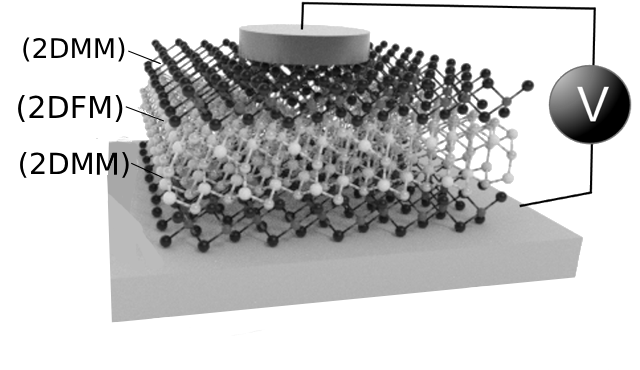The field of two-dimensional (2D) materials has attracted enormous attention thanks to the remarkable properties that emerge at the single-layer level and the large number of available and combinable compounds that give rise to physical phenomena not previously accessible with conventional 3D materials. In spintronics, 2D layers stacks can be regarded as highly optimized modules for the development of advanced devices that are energy- efficient, flexible and miniaturized, enabling ultra-high-density smart electronics. This multidisciplinary project aims to investigate the potential of a new class of ferroic 2D materials for spintronics and to lay the foundations for developing a new generation of purely 2D multifunctional spintronic devices.
The project focuses on two families of 2D materials: (i) 2D magnetic materials (2DMM) and (ii) 2D ferroelectric materials (2DFM). Largely unexplored, these materials greatly broaden the range of possible spintronic applications for 2D systems. For example, the magnetic and electrical properties of 2DMMs have been shown to be fully switchable and controllable by external stimuli, opening perspectives that are impossible with 3D materials. Conversely, 2DFMs provide ultrathin ferroelectric layers that are difficult to achieve with 3D systems, paving the way for electrically switchable high-density memories. Moreover, combining these materials in 2DFM/2DMM heterostructures could yield new device concepts, advancing toward the fabrication of fully 2D multifunctional spintronic devices.
The results of this project will represent a major step toward using 2D materials as building blocks for manufacturing not only spintronic devices but also multifunctional 2D devices with potential for future advanced applications such as quantum and neuromorphic computing.

